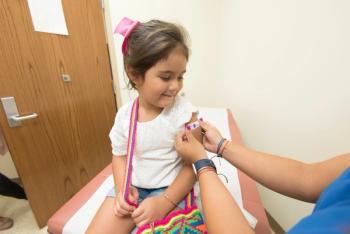
Tick, Tick: Spring Signals the Spread of Lyme Disease in the US
During Lyme Disease Awareness Month, advocating for collective action in research, education, and prevention can help tackle the challenges of Lyme disease and promote healthier communities nationwide.
In recent years, Lyme disease has emerged as a public health concern, with its incidence on the rise across the United States. According to the CDC, reported cases of Lyme disease have surged to 62,551 in 2022, marking an increase from previous years. This upward trend reflects a growing threat to communities, underscoring the urgent need for heightened awareness and measures to address this tick-borne illness caused by spirochetes in the Borrelia burgdorferi sensu lato complex.
This finding represented an overall 68.5% increase from the annual average of 37,118 cases reported during the period of 2017–2019, including a 72.9% increase in high-incidence jurisdictions and a 10% increase in low-incidence jurisdictions. During 2022, 95.5% of reported cases were reported from high-incidence jurisdictions, compared with an average of 93.1% from 2017–2019. Lyme disease incidence in 2022 was 68.8% higher than that from the 2017–2019 period. In 2022, the median incidence among high-incidence jurisdictions was 58% higher than the 2017–2019 period, although the median incidence among low-incidence jurisdictions was 24% lower than during 2017–2019.1
Beginning January 1, 2022, the CDC revised the national surveillance case definition for Lyme disease based on recommendations from the Council of State and Territorial Epidemiologists (CSTE). In high-incidence areas, cases can now be reported based solely on laboratory evidence, while low-incidence areas still require clinical information. The definition for probable cases in low-incidence areas now includes only patients with objective signs of infection, such as EM.1
This change resulted in a 69% increase in reported Lyme disease cases compared to the annual average of cases reported during 2017 - 2019. This increase likely reflects changes in how surveillance data are collected and reported.1
Symptoms
Around 80% of individuals infected with B burgdorferi typically develop a distinctive rash known as erythema migrans (EM), a red circular rash that expands, within 1 month of exposure. Early signs and symptoms 3 such as EM accompany symptoms such as:
- Fatigue
- Fever
- Headache
- Mild stiff neck
- Arthralgia or myalgia
Later signs and symptoms in the days to months after the bite are more severe, and include:
- Headaches and neck stiffness
- Additional EM rashes on other parts of the body.
- Facial palsy (loss of muscle tone or drooping on one or both sides of the face)
- Arthritis (joint pain and swelling, particularly affecting the knees and other large joints)
- Intermittent pain in tendons, muscles, joints, and bones.
- Heart palpitations or irregular heartbeat (Lyme carditis)
- Episodes of dizziness or shortness of breath.
- Inflammation of the brain and spinal cord.
- Nerve pain and shooting pains.
- Numbness or tingling sensations in the hands or feet.
These symptoms can vary in severity and may occur at different stages of the disease, highlighting the importance of timely diagnosis and treatment.
Treatment and Diagnosis Methods
The standard treatment for Lyme disease typically involves a course of antibiotics, with a specific choice depending on factors such as the patient's age, medical history, and the stage of the disease. Commonly prescribed antibiotics for Lyme disease include doxycycline and amoxicillin.
Elitza Theel, PhD, serves as a Clinical Laboratory Director in the Division of Clinical Microbiology at Mayo Clinic. With expertise in infectious disease serology testing, she manages the detection of antibodies against infectious diseases and the associated antigens. She further explains the diagnostic process in a conversation with Contagion saying, “Lyme disease stands out among other vector-borne illnesses due to the primary diagnostic method we employ: the detection of antibodies through serologic methods. In contrast to most pathogens transmitted by vectors, which are typically identified using molecular testing like PCR to detect genetic material, Lyme disease diagnosis relies on serologic assays.
“These assays detect IgM and IgG antibodies produced in response to infection with B burgdorferi. They are particularly effective in the later stages of Lyme disease, typically becoming detectable 7 to 10 days after infection,” Theel explained.
Crucially, antibacterial treatment can impact the clinical sensitivity of serologic assays. This effect is especially notable in patients with EM, where timely treatment initiation can significantly dampen the immune response, leading to up to half of these individuals testing seronegative upon convalescent testing.
“However, there is a limitation to these assays during the acute phase of infection, within 1 to 2 weeks after transmission from the tick to the host,” Theel said. “During this period, the assays can produce false-negative results because the patient has not yet developed sufficient antibodies to be detected by our serologic methods. While these assays excel at detecting patients with disseminated or later-stage Lyme disease, they are less reliable in the very early stages of
infection.”
Post-Treatment Lyme Disease Syndrome
Kiersten J. Kugeler, PhD, MPH, works within the Division of Vector-Borne Diseases at the CDC, and is a researcher in Public Health, Infectious Diseases, and Epidemiology. She offered her knowledge about the disease to Contagion, noting that it is not always a smooth road to recovery for patients.
“Although most patients recover completely when treated with a 2-to-4-week course of oral antibiotics, about 5% to 10% can have prolonged symptoms of fatigue, body aches, or difficulty thinking following treatment. This condition is called PTLDS (or post-treatment Lyme disease syndrome), and its cause is currently unknown,” Kugeler said.
In a study published in The Lancet, researchers led by Ming Kei "Jake" Chung, PhD, delved into this enigma using a comprehensive dataset spanning from 2008 to 2016. Analyzing more than 98 billion billing and 1.4 billion prescription records, the study aimed to uncover unique facets of PTLDS that could shed light on its diagnosis and underlying mechanisms.4
Comparing patients with Lyme disease who experienced only short-term symptoms (Lyme APS) with those afflicted with PTLDS, researchers found notable distinctions. While the age and temporal distributions mirrored each other, the prevalence of certain chronic conditions stood out starkly. PTLDS patients exhibited significantly higher rates of anemia, hyperlipidemia, and osteoarthrosis compared to their Lyme APS counterparts.4
Kugeler elaborated on this saying, “It is important to note that studies conducted over the last several decades in both the US and Europe have demonstrated that additional antibiotic therapy doesn't do any better than placebo in helping these people feel better. The risk-benefit ratio of extended antibiotic therapy for people with these prolonged symptoms does not suggest that that is a safe or appropriate or helpful thing to do.”
Epidemiology of Lyme Disease
First identified in Lyme, Connecticut, in 1975, the disease manifests with symptoms such as rash, joint pain, and flu-like symptoms. Tick exposure can occur year-round, but ticks are most active during warmer months, from April to October, and most common in the upper Midwest and the northeastern and mid-Atlantic states. It is also common in Europe and south-central and southeastern Canada.
“It is transmitted to humans through the bite of infected black-legged (deer) ticks. These black-legged ticks are Ixodes scapularis,” according to Kugeler. “That is the scientific name for the tick that transmits Lyme disease in the northeastern, Mid-Atlantic, and north-central US, and then Ixodes pacificus is the name of the tick that transmits Lyme disease in areas along the Pacific coast where it occurs.”
Geographic Spread
In a recent study from Science Report, Millien et al researchers explored how changes in biodiversity influence disease risk. They found that the abundance of small mammal hosts and the prevalence of the white-footed mouse, a key host for Lyme disease-carrying ticks, impacted disease risk in tick vectors. This highlights the importance of regional processes involving small mammal populations in shaping Lyme disease dynamics.5
“Initially, Lyme disease was primarily confined to a few Upper Midwest states and the northeast. However, these cases have progressively spread into more Midwest states, such as Ohio, Pennsylvania, Indiana, and Illinois, spanning throughout the Northeast as well,” Theel said.
“This spread can be attributed to the expansion of the vector, as well as the proliferation of environmental reservoirs like the white-footed mouse and deer.”
Of particular concern is the predicted increase in white-footed mouse abundance because of climate warming, which could exacerbate Lyme disease risk in the region. Understanding these biodiversity-disease relationships is crucial for effective disease management strategies.
“Climate change plays a role in this, as does the increasing human encroachment into areas where deer and mice thrive in their natural habitats,” Theel explained. “It is a multifaceted reason for the rising cases, we are witnessing the expansion of tick vectors in their habitats, coupled with humans increasingly entering areas that were traditionally preserved for wildlife.”
Prevention Strategies
The study showed that both high and low doses of TP-05 outperformed the placebo in eliminating ticks. The average mortality rate for ticks was 97.0% with the high dose and 92% with the low dose after the initial exposure to ticks, in contrast to 5% with the placebo. At the 30-day mark, the mortality rate for ticks remained elevated for the TP-05 treatments, 89.0% for the high dose and 91% for the low dose, compared with the placebo, at 9%. No noteworthy differences in the effectiveness of the 2 TP-05 doses were detected, and the treatment was generally well-received.6
In general, proactive prevention measures play a large role in reducing the risk of tick bites and safeguarding public health.7 These simple yet important measures can significantly reduce the risk of tick bites and associated diseases:
- Know where ticks are commonly found, such as grassy, wooded, or brushy areas, as well as on animals.
- Treat clothing and gear with permethrin, a repellent effective through multiple washings, or opt for permethrin-treated items.
- Use EPA-registered insect repellents containing DEET, picaridin, or other recommended ingredients, following product instructions carefully.
- When outdoors, avoid tick-infested areas and stick to cleared trails.
- After outdoor activities, check clothing, gear, and pets for ticks and shower within 2 hours to wash off unattached ticks.
- Conduct a thorough body check for ticks, paying close attention to hard-to-see areas.
As the warmer seasons increase tick encounters, the rising incidence of Lyme disease deserves attention. Varied symptoms underscore the need for timely diagnosis and treatment, while challenges persist in understanding post-treatment complications. Effective prevention strategies, alongside promising treatments, are making strides. Collective action remains to advocate for research funding and public education to mitigate Lyme disease's impact and promote healthier communities nationwide.
REFERENCES
1. Kugeler K, Earley A, Mead P, et. al. Surveillance for Lyme Disease After Implementation of a Revised Case Definition — United States, 2022. Morbidity and Mortality Weekly Report. Published February 15, 2024. Accessed May 21, 2024. https://www.cdc.gov/mmwr/volumes/73/wr/mm7306a1.htm?s_cid=mm7306a1_w
2. Theel E, Wheeler S. A Review of Diagnostic Testing and Automation for Lyme Disease. Association for Diagnostics & Laboratory Medicine. Published September 1, 2024. Accessed May 21, 2024. https://www.myadlm.org/cln/articles/2023/septoct/a-review-of-diagnostic-testing-and-automation-for-lyma-disease
3. CDC. Signs and Symptoms of Untreated Lyme Disease. Published May 14, 2024. Accessed May 21, 2024. https://www.cdc.gov/lyme/signs-symptoms/index.html
4. Chung M, Caboni M, Strandwitz P, et. al. Systematic Comparisons Between Lyme Disease and Post-Treatment Lyme Disease Syndrome in the US with Administrative Claims Data. The Lancet. 2023;90:104524.10.1016/j.ebiom.2023.104524
5. Millien V, Leo S, Turney S, et al. It’s about time: small mammal communities and Lyme disease emergence. Sci Rep. . 2023;13:14513. doi:10.1038/s41598-023-41901-z
6. Tarsus Announces Positive Topline Results from Carpo, a Phase 2a Proof-of-Concept “Tick-Kill” Trial Evaluating TP-05 (lotilaner) for the Prevention of Lyme Disease. Published February 22. 2024. Accessed February 26, 2024. https://ir.tarsusrx.com/news-releases/news-release-details/tarsus-announces-positive-topline-results-carpo-phase-2a-proof
7. CDC. Preventing Tick Bites. Published May 14, 2024. Accessed May 21, 2024. https://www.cdc.gov/ticks/prevention/?CDC_AAref_Val=https://www.cdc.gov/ticks/avoid/on_people.html
Newsletter
Stay ahead of emerging infectious disease threats with expert insights and breaking research. Subscribe now to get updates delivered straight to your inbox.












































































































































































































































































